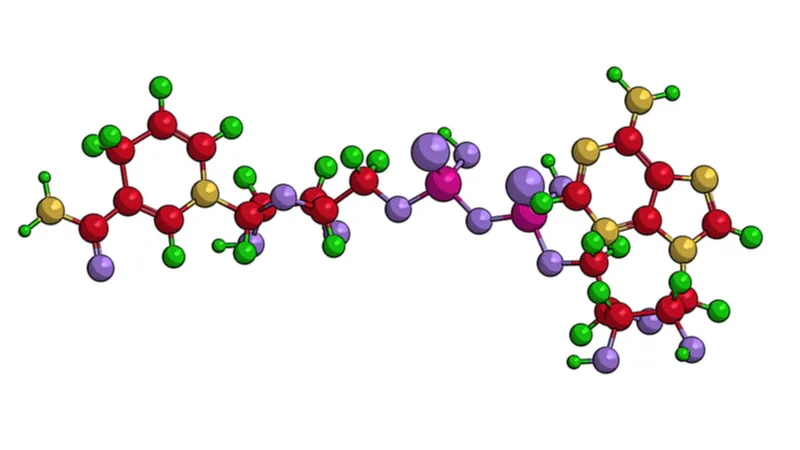Scientists have alleviated symptoms of the rare premature aging disease ataxia-telangiectasia using NAD+ supplementation in a mouse model [1]. This success deepens our understanding of the role NAD+ plays in aging.
The ubiquitous facilitator
The coenzyme nicotinamide adenine dinucleotide (NAD+) is one of the foundations of life as we know it, and it may have been around for billions of years. Since evolution uses whatever resources are at hand, it developed hundreds of biological processes that rely on NAD+ as a transporter of electrons between molecules. These processes include energy production, mitochondrial maintenance, and DNA repairment.

Read More
Directly implicated in at least three hallmarks of aging – mitochondrial dysfunction, genomic instability, and cellular senescence – the age-related decline in NAD+ levels is a major target for longevity researchers. Alterations in NAD+ homeostasis accompany most age-related diseases [2]. In preclinical studies, NAD+ supplementation using its various precursors has demonstrated anti-aging effects, although more research is needed.
Ataxia-telangiectasia: aging on steroids
In the paper we are highlighting today, NAD+ supplementation is tested against a rare genetic disease called ataxia-telangiectasia (A-T), which was recently recognized as a type of premature aging [3]. A-T patients experience aging-like symptoms, including cognitive decline, motor dysfunction, immunodeficiency, thymus devolution, cancer predisposition, and hypersensitivity to DNA double-strand breaks.
A-T is caused by a mutation in the gene tasked with producing ATM kinase, a vital element of the DNA double-strand break response. Unresolved DNA damage has been shown to lead to mitochondrial dysfunction, cellular senescence, and, as a result, accelerated aging. The clinical picture of A-T along with previous research led the scientists to believe that NAD+ supplementation might be a viable strategy against A-T.
In fibroblasts taken from A-T patients, the researchers discovered elevated levels of cellular senescence. Signs of mitochondrial dysfunction were abundant as well, including increased mitochondrial content, which indicates impaired mitophagy (the process of breaking up and removing defunct mitochondria). Cells that had a healthy ATM gene knocked down showed a similar picture.
The researchers also found lots of DNA fragments floating around in the cytoplasm of ATM-deficient cells. An abundance of cytoplasmic DNA is known to cause an antiviral-like immune response: cellular mechanisms probably misidentify these fragments as viral DNA and attack them, triggering inflammation and cellular senescence.
In a series of experiments, the researchers eludicated how these bits are connected. PARP1 is a polymerase that orchestrates the DNA break response. ATM deficiency prevents this response mechanism from working as intended. Since the repair job is never finished, PARP1 remains constantly activated, but the problem is that PARP1 uses NAD+ as fuel. As long as it stays active, it gobbles up large quantities of NAD+, and declining levels of NAD+ impair mitochondrial maintenance. Damaged mitochondria spit out chunks of mitochondrial DNA into the cytoplasm, where it is sensed by the immune system, leading to chronic inflammation and senescence.
NR vs A-T
NAD+ supplementation does not tackle the upstream cause of A-T, but it may be able to alleviate the symptoms. According to the researchers, replenishing NAD+ levels using NR (nicotinamide riboside) as a precursor caused a marked improvement in every department: it lowered the cytoplasmic DNA count, improved mitochondrial health, and led to a decline in senescence and DNA breakage markers.
A-T affects neural cells in particular, causing motor dysfunction and cognitive decline. Additional experiments showed that in the brains of ATM-deficient mice, treatment with NR attenuates neuronal loss and cellular senescence by improving mitochondrial health. It also leads to lesser activation of microglia and astrocytes (overactivation of these two types of neural cells has been linked to chronic neuroinflammation and cognitive degeneration). NR treatment also produced a notable improvement of certain motor functions in ATM-deficient mice.
Interestingly, in healthy control mice, especially in younger ones, NR treatment caused inflammation and DNA breakage markers to go up rather than down. The researchers speculate that the treatment may have disturbed NAD+ homeostasis in young, healthy animals that do not require NAD+ supplementation. It is not clear how these findings translate to humans, but it is not unreasonable to suggest that there is such a thing as too much NAD+. In the researchers’ words, “whether NAD+ supplementation is advisable for healthy young humans remains to be determined.”
Conclusion
This research provides yet another indication that the loss of NAD+ homeostasis underlies many processes of aging, and that NAD+ supplementation can be a viable strategy against particular age-related diseases, and aging in general. This mounting evidence begs for clinical studies of NAD+ role in aging. Since NAD+ precursors are widely available as supplements, we would certainly like to learn more about their possible benefits and limitations.
Disclaimer
This article is not a substitute for consulting your physician about which supplements may or may not be right for you. We do not endorse supplement use nor any product or supplement vendor, and all discussion here is for scientific interest.
Literature
[1] Yang, B., Dan, X., Hou, Y., Lee, J. H., Wechter, N., Krishnamurthy, S., … & Bohr, V. A. (2021). NAD+ supplementation prevents STING‐induced senescence in ataxia telangiectasia by improving mitophagy. Aging Cell, e13329.
[2] Katsyuba, E., Romani, M., Hofer, D., & Auwerx, J. (2020). NAD+ homeostasis in health and disease. Nature Metabolism, 2(1), 9-31.
[3] Shiloh, Y., & Lederman, H. M. (2017). Ataxia-telangiectasia (AT): an emerging dimension of premature ageing. Ageing research reviews, 33, 76-88.




